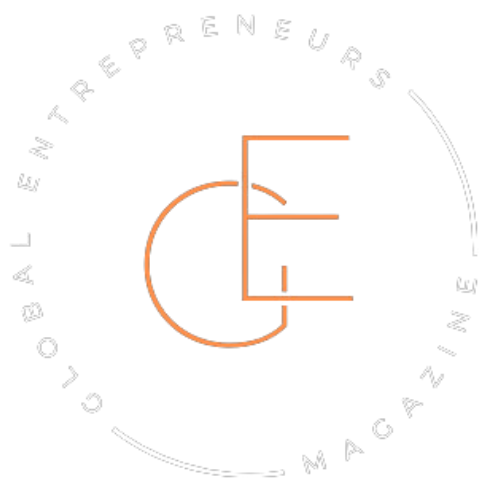In 2012, a small-time coffee shop owner named Daniel stood in front of a lease agreement that would either take his business to the next level or bankrupt him. The new space was three times the size of his current shop, in a prime location, and came with a price tag that made his stomach churn. He had two choices: stay small and safe or take the plunge and expand.
The voices around him were split. Some said “Go big or go home.” Others warned him, “You’re gambling everything.” Daniel wasn’t reckless. He ran the numbers, thought about worst-case scenarios, and decided to make the leap. But he didn’t jump blindly. He negotiated a flexible lease, secured a line of credit for emergencies, and kept his original shop running as a safety net.
Fast forward to today—his coffee brand is thriving across multiple locations, not because he risked everything, but because he played bold and smart at the same time.
The world loves stories of fearless entrepreneurs who bet it all and won. But the reality? Most overnight success stories are built on calculated risk, not blind leaps of faith. The challenge isn’t about taking big swings—it’s about knowing which swings to take and when to take them.
Making bold moves in business isn’t just about courage. It’s about precision, timing, and knowing where the safety nets are before you jump. Let’s break down how to take risks without losing everything in the process.
The Myth of the ‘All-In’ Gamble
Somewhere along the way, entrepreneurship got tangled up with all-or-nothing thinking. We hear stories of billionaires who risked everything—maxed-out credit cards, second mortgages, and a single desperate shot at success. The message? If you’re not willing to bet it all, you don’t want it bad enough.
But here’s what those stories leave out: For every one entrepreneur who went all in and won, there are thousands who lost everything and never made the headlines.
Take Lisa, a talented graphic designer with a steady freelance business. She dreamed of launching her own creative agency but refused to believe in the “jump and the net will appear” philosophy. Instead of ditching her clients overnight, she built her agency in phases—hiring one contractor at a time, testing new services before scaling, and keeping her freelance income as a financial cushion. Within three years, she had a full-fledged agency, a roster of loyal clients, and most importantly, zero personal financial ruin.
Smart risk-taking isn’t about dramatic gestures. It’s about controlled expansion. Bold entrepreneurs don’t always burn the boats—they build a bridge first.
So, what’s the better way?
- Test the waters before diving in. Whether it’s a new product, service, or business model, start small and gather real-world feedback.
- Scale with intent. Growth isn’t a race. Expanding too fast can be just as dangerous as playing it too safe.
- Keep an exit route. Even the best ideas don’t always work out. A smart entrepreneur knows when to double down and when to pivot.
Bold doesn’t mean reckless. It means playing the long game—one smart move at a time.
Bold Doesn’t Mean Blind: Making Data-Backed Decisions
In 2018, a promising food startup went viral for its plant-based protein bars. Investors lined up, and the founders rushed to scale. They expanded production, signed national distribution deals, and poured millions into marketing—without checking if their product had long-term demand. Six months later, sales tanked, and they were stuck with warehouses full of unsold inventory.
They had a great idea. What they didn’t have was a plan backed by real data.
Risk-taking without facts is just gambling. Bold moves don’t happen in a vacuum. The best entrepreneurs study patterns, understand market shifts, and trust numbers over gut feelings.
How to Measure Risk vs. Reward
- Use real-world validation. Before launching a full-scale product, test it with a smaller audience. If people aren’t buying on a small scale, they won’t buy at a national level.
- Know your worst-case scenario. What’s the absolute worst that could happen? If failure would wipe you out completely, the risk isn’t bold—it’s reckless.
- Track leading indicators. Businesses rarely fail overnight. Pay attention to trends, customer behavior, and financial health before making big decisions.
Entrepreneurs don’t need to be fearless—they need to be clear-eyed. Making bold moves works best when those moves are calculated, not impulsive.
The Importance of a Safety Net (Without Killing Your Momentum)
In 2008, two childhood friends launched a premium sneaker brand. Their designs were fresh, demand was high, and investors were interested. But instead of rushing into mass production, they did something unexpected—they held back.
They started with limited inventory and a pre-order model, ensuring they never overproduced. Profits were reinvested, not drained into unnecessary overhead. When the 2009 financial crisis hit, they weren’t drowning in unsold stock or crushing debt. Instead, they had cash flow, flexibility, and options. Today, their brand is a multi-million-dollar name in streetwear, all because they understood one thing: A safety net doesn’t mean playing it safe—it means playing it smart.
How to Take Risks Without Going Broke
- Keep cash reserves. Scaling up costs money. A safety cushion lets you handle unexpected downturns without scrambling for last-minute funding.
- Make reversible bets. A bold move shouldn’t be a one-way door. Test, iterate, and leave yourself a way out if things don’t go as planned.
- Don’t let pride sink you. Holding onto a failing idea just because you’ve invested in it is a quick way to financial disaster. If something isn’t working, pivot before it’s too late.
Playing bold doesn’t mean betting your entire future on one move. The smartest entrepreneurs know when to push forward—and when to pull back just enough to stay in the game.
The Importance of a Safety Net (Without Killing Your Momentum)
In 2008, two childhood friends launched a premium sneaker brand. Their designs were fresh, demand was high, and investors were interested. But instead of rushing into mass production, they did something unexpected—they held back.
They started with limited inventory and a pre-order model, ensuring they never overproduced. Profits were reinvested, not drained into unnecessary overhead. When the 2009 financial crisis hit, they weren’t drowning in unsold stock or crushing debt. Instead, they had cash flow, flexibility, and options. Today, their brand is a multi-million-dollar name in streetwear, all because they understood one thing: A safety net doesn’t mean playing it safe—it means playing it smart.
How to Take Risks Without Going Broke
- Keep cash reserves. Scaling up costs money. A safety cushion lets you handle unexpected downturns without scrambling for last-minute funding.
- Make reversible bets. A bold move shouldn’t be a one-way door. Test, iterate, and leave yourself a way out if things don’t go as planned.
- Don’t let pride sink you. Holding onto a failing idea just because you’ve invested in it is a quick way to financial disaster. If something isn’t working, pivot before it’s too late.
Playing bold doesn’t mean betting your entire future on one move. The smartest entrepreneurs know when to push forward—and when to pull back just enough to stay in the game.
The Psychology of Boldness: Moving with Confidence Without Self-Destruction
In 2015, a rising tech entrepreneur named Mia faced a brutal decision—her startup was running out of cash. Investors wanted a pivot, but her gut told her to push forward with the original plan. She wasn’t just battling market conditions; she was battling self-doubt, pressure, and fear of failure.
She took a step back. Instead of making a snap decision, she focused on the data, consulted trusted mentors, and removed emotions from the equation. The result? A measured, confident move that led to a strategic partnership rather than a desperate funding scramble. Her company thrived—not because she was fearless, but because she knew when to take control and when to recalibrate.
How to Manage Fear and Uncertainty in High-Stakes Decisions
- Separate fear from risk. Fear is emotional; risk is measurable. Break decisions into numbers, facts, and probabilities instead of gut reactions.
- Build mental resilience. Rejection, setbacks, and uncertainty are part of the process. The best entrepreneurs don’t avoid them—they adapt.
- Learn when to push forward and when to pivot. Stubbornness kills businesses. Confidence isn’t about always moving forward—it’s about knowing which direction to move in.
The best business moves aren’t made in blind confidence or crippling doubt. They’re made with clarity, self-awareness, and a willingness to adapt.
Real Stories of Bold Moves That Paid Off (and Those That Didn’t)

Some bold moves turn businesses into giants. Others send them crashing. The difference? Strategy, timing, and knowing when to hold or fold.
The Win: Netflix’s Shift to Streaming
In the early 2000s, Netflix was still a DVD rental company. Meanwhile, Blockbuster dominated the home entertainment industry. Then Netflix made a bold call—they bet on streaming before the market was ready.
They didn’t just guess. They analyzed internet trends, user behavior, and emerging technology. Blockbuster dismissed the idea, doubling down on late fees and brick-and-mortar stores. By the time streaming became mainstream, it was too late for Blockbuster.
What worked: Netflix took a calculated risk, not a blind leap. They phased out DVDs gradually instead of killing them overnight, ensuring they had a safety net.
The Loss: Quibi’s $1.75 Billion Gamble
Quibi, the short-form video platform, had everything—massive funding, Hollywood backing, and a media blitz. But they ignored one thing: market demand.
Their bet? That people would pay for premium short videos on mobile when free platforms like TikTok and YouTube were already dominating. They launched without testing their core assumption, and within six months, they collapsed.
What went wrong: They risked everything on an untested idea, with no backup plan. Their failure wasn’t boldness—it was overconfidence.
What You Can Learn From Both
- Smart risks are backed by real-world trends. Betting on the future works—if the data supports it.
- Pivoting is key. Netflix phased out DVDs gradually. Quibi had no fallback when their idea flopped.
- Don’t ignore what customers actually want. The boldest move isn’t always about inventing something new—it’s about recognizing where the market is already headed.
Taking risks doesn’t mean jumping without a parachute. It means knowing which moves have the best chance of landing safely.
The Art of Making Big Moves While Staying in the Game
Bold entrepreneurs don’t succeed because they throw caution to the wind. They succeed because they master the balance between risk and stability.
Look at Sara Blakely, the founder of Spanx. She didn’t quit her day job the moment she had an idea—she worked on her business during nights and weekends, funding it with her own savings. By the time she launched, she had a tested product, a clear market need, and enough financial cushion to weather the early days.
Contrast that with countless startups that burned through funding on splashy launches, only to realize too late that they had no sustainable business model. They moved fast, but without a foundation.
How to Make Boldness a Long-Term Strategy Instead of a One-Time Gamble
- Make bold moves in stages. Taking risks doesn’t mean taking them all at once. Build momentum gradually.
- Keep your safety net intact. Whether it’s cash flow, multiple revenue streams, or a strong network, never risk everything at once.
- Stay adaptable. The most successful businesses aren’t just bold—they’re flexible. If something isn’t working, adjust instead of doubling down on a failing idea.
Being bold in business isn’t about taking one big risk and hoping for the best. It’s about taking smart, strategic risks over and over again—without taking yourself out of the game.




